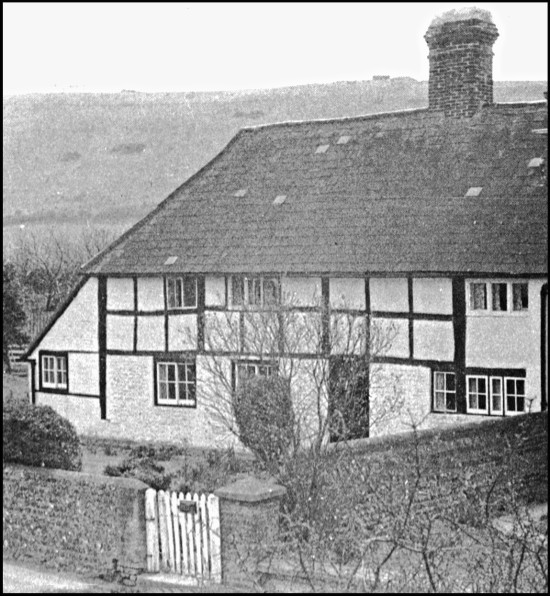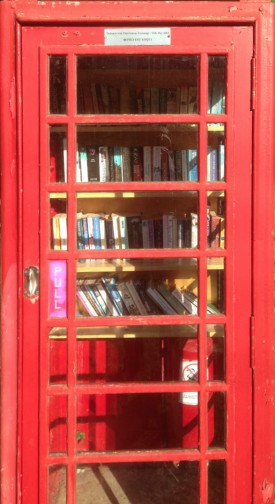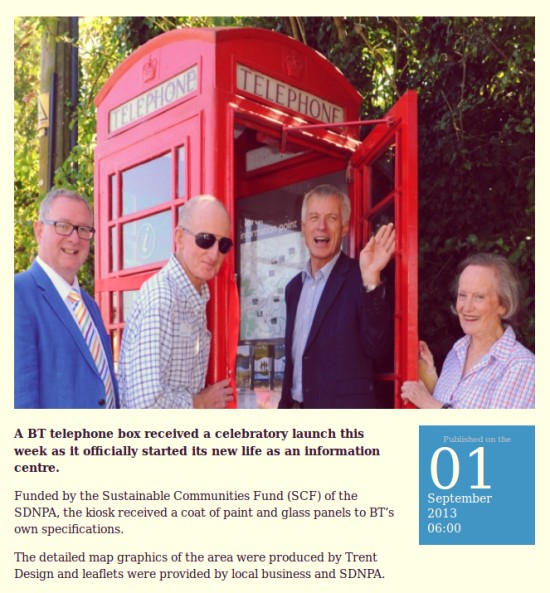
A defibrillator is to be installed inside the old telephone box at Sussex 4 Wheel Drive.
Category Archives: Telephone Box
A change in the way you call local numbers
 As we noted a month ago, Ofcom is making a change to the way people in the Brighton area dial local numbers. From 1 October 2014, you’ll need to add the 01273 area code before you call any local number from your home phone (just like you already do with national and other numbers or when you use your mobile).
As we noted a month ago, Ofcom is making a change to the way people in the Brighton area dial local numbers. From 1 October 2014, you’ll need to add the 01273 area code before you call any local number from your home phone (just like you already do with national and other numbers or when you use your mobile).
It will still cost exactly the same to make a local call.
What you need to do
If you have any local numbers stored in your home phone, make sure you change them to include 01273 before 1 October. And don’t forget to check any other equipment, such as personal or home alarm systems, that might connect to a local number.
Also, if you have elderly family members, friends or neighbours, you might want to check to make sure they know it’s happening, too – particularly if they rely on Carelines or pendants (telecare type services) for help.
After the switch, if you forget to add 01273 you’ll get a free recorded message to remind you.
Any questions?
Visit ofcom.org.uk/dialthecode email dialthecode@ofcom.org.uk or call 0300 123 3333 (it costs the same as an 01 or 02 call).

[Amended 16:30 2-9-14.]
SAFER than HART?
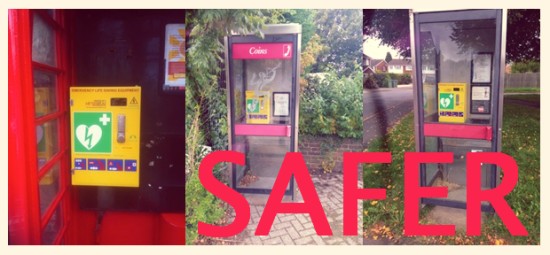
The West Sussex Gazette reports on Defib Day in Steyning: training sessions will be held at Steyning Health Centre at 10:00am, 11:00am, 12:30pm and 1:30pm on Saturday 26th April. Contact Stephanie Grant on 01903 816138 or email her at stephaniegrant61@gmail.com to book a place.
Arbor Vitae
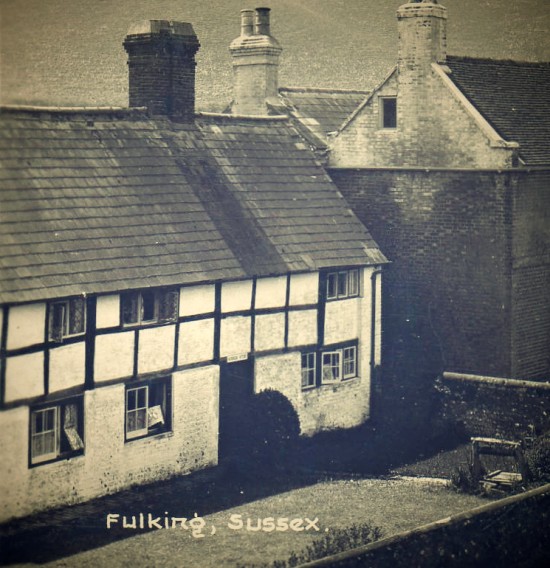
Arbor Vitae in the early 1900s (from an old postcard): note the well that can be seen in the front garden to the right of the picture.
C17 or earlier timber-framed building with painted brick infilling, ground floor brick infilling, ground floor rebuilt in flints, now also painted. Tiled roof. Casement windows, those on first floor with diamond-shaped panes. Two storeys. Four windows.
The original building was three rooms wide, an unusual configuration for a cottage. It is of half-timbered construction and, for most of its existence, would have been painted in the traditional manner with the walls lime washed and the timbers picked out in black tar. To this day, some of the windows still have old glass set in diamond shaped leaded panes.
At the beginning of the 20th century, George Stephen Cane Cuttress owned and operated the brewery at Poynings. He also owned various properties in Fulking, including Arbor Vitae which he sold at auction in 1914. The bill of sale described it as one cottage with its own well, let to George Beard for an annual rent of £15. George Beard was a member of a family who had lived in the parish of Edburton for many decades. He was the uncle of William Beard who emigrated to Australia in 1909.
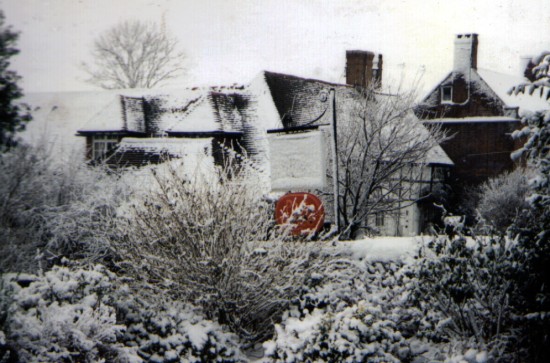
A photograph of Arbor Vitae in the winter of 1991 taken by Stuart Howgrave-Graham. The dormer windows added in the 1980s by Peter Sheppard can be seen to the left of the red Post Office sign.
Whilst he was living at Arbor Vitae, Peter Sheppard began experimenting with plastic mouldings. He almost smoked out The Street when the machine he was using overheated. He sold the house to Derek Lintott and his wife Josephine (Jo). Derek was a surveyor and for a while was Chairman of the Parish Council. Jo was a professional calligrapher who worked mainly at home in the studio at the end of the garden. She also appeared in a BBC Television programme featuring Sussex village life. While she was resident in Fulking she lead a successful campaign to persuade BT not to remove the traditional, red K6 telephone box from The Street and replace it with a more up to date, but totally incongruous, metal and glass booth. The telephone box that she sucessfully fought to save itself became a Grade II listed building in 1988.
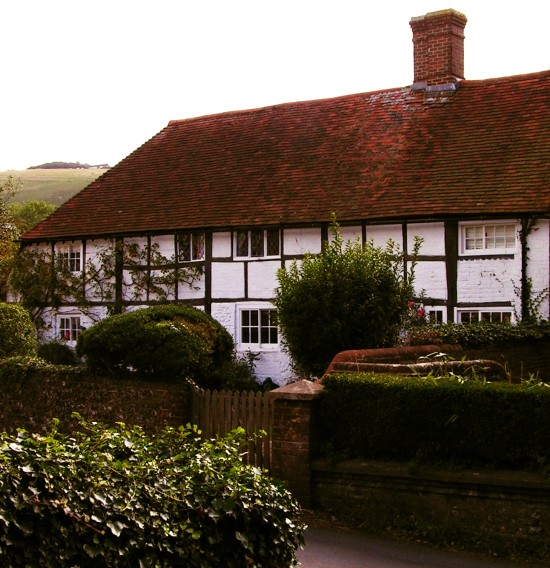
Arbor Vitae in 2007: comparison with the 1950s photo above reveals how the later two-storey extension has seamlessly replaced a single storey lean-to.
Reference
- F.A. Howe (1958) A Chronicle of Edburton and Fulking in the County of Sussex. Crawley: Hubners Ltd.
[Copyright © 2014, Anthony R. Brooks. Adapted from Anthony R. Brooks (2008) The Changing Times of Fulking & Edburton. Chichester: RPM Print & Design, pages 168-169, 245-246.]
Defib-in-the-box
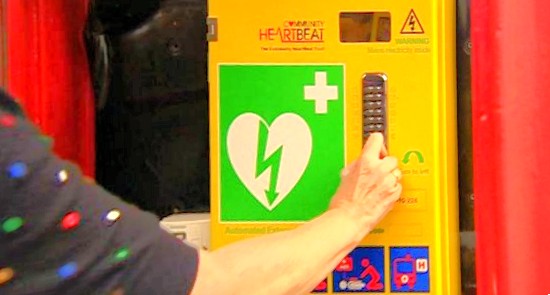
The Shoreham Herald is reporting that public access defibrillators are to be put into defunct telephone boxes across Steyning, Bramber and Upper Beeding.
Village Action Plan – August 2013
You can download the Village Action Plan – August 2013 version by clicking the link below.
“Old red telephone box .. converted into tourist information kiosk”
This former BT telephone kiosk was installed decades ago in .. a hamlet nestling in the South Downs .. For years it remained unused, .. It has now undergone months of restoration work and now displays a large-scale map of the area with details of local places of interest and local amenities. It would also dispense leaflets and brochures provided by the South Downs National Park Authority, various institutions and by businesses in the vicinity.

